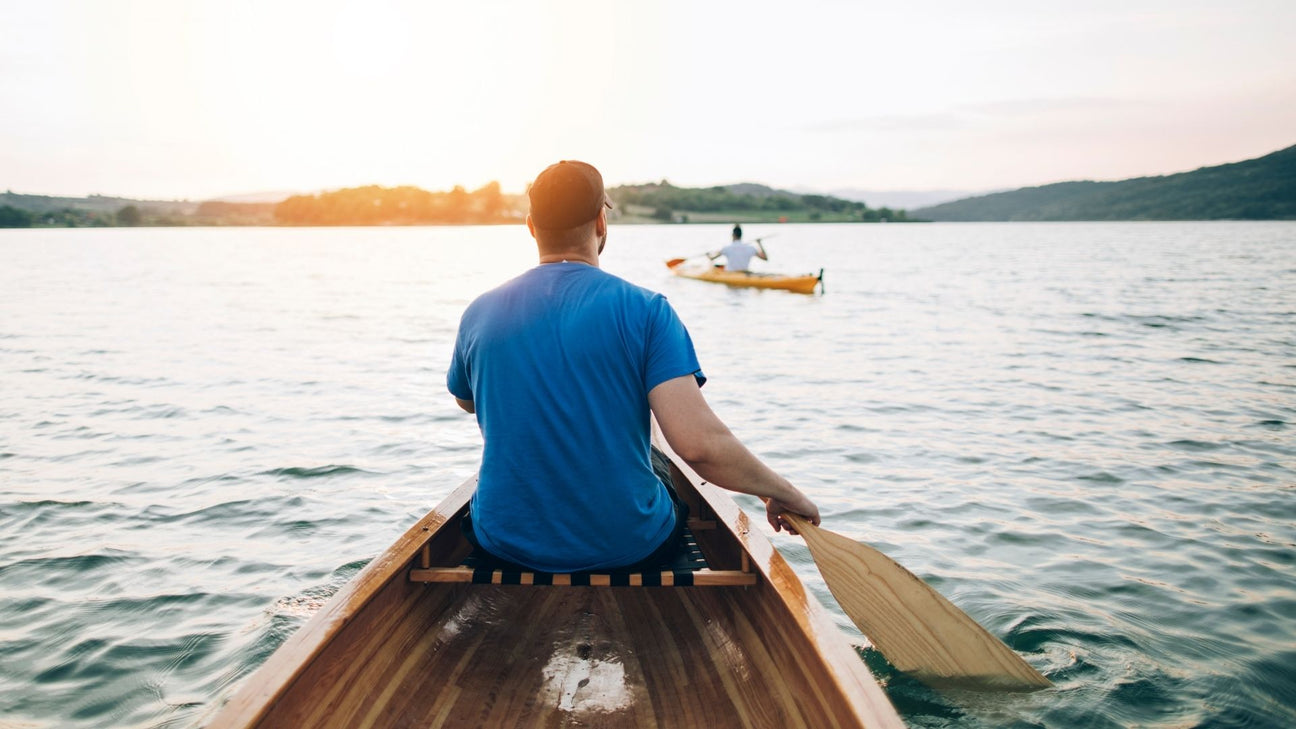When you step onto a paddleboard, you initiate a full-body workout that seamlessly integrates various muscle groups. The act of balancing itself activates your core muscles, including the deep abdominals and lower back. As you paddle, your arms, shoulders, and back propel you forward, engaging in a rhythmic motion that builds strength and endurance. Your legs work to maintain stability, particularly as you navigate varying water conditions. Imagine trying to balance a tray of drinks while walking; SUP requires a similar level of constant, subtle muscle engagement. This constant activation leads to improved muscle tone and strength, contributing to a more robust physique.
The Impact of Paddleboarding on Heart Health
It elevates your heart rate, providing a cardiovascular workout that improves heart and lung function. The intensity of your workout can vary depending on your paddling style and water conditions. A leisurely paddle on calm waters provides a moderate cardiovascular workout, while paddling against wind or waves increases the intensity, challenging your cardiovascular system. This increased heart rate promotes better blood circulation, reduces the risk of heart disease, and enhances overall cardiovascular health. Think of it as a low-impact jogging session on water, with the added benefit of cool water and fresh air. Studies have even shown that just thirty minutes of paddleboarding can lower blood pressure.
The Mental Health Benefits
The rhythmic paddling motion and the serene environment of being on the water create a sense of calm and tranquillity. This combination helps to reduce stress and anxiety, promoting mental clarity and mindfulness. Being surrounded by nature, whether it’s a calm lake, a gentle river, or the open sea, provides a break from the hustle and bustle of daily life. The feeling of gliding across the water, combined with the visual beauty of the surroundings, fosters a sense of peace and well-being. It's like a moving meditation, allowing you to focus on the present moment and leave your worries behind. Paddleboarding can help the body switch to a parasympathetic state, similar to the benefits of yoga or tai chi.
The Role of Paddleboarding in Stability
Maintaining balance on a paddleboard requires constant engagement of your core muscles, leading to improved stability and coordination. This continuous engagement strengthens your core, which is essential for good posture and overall physical health. The subtle adjustments you make to stay upright enhance your proprioception, the body's ability to sense its position and movement. Imagine trying to stand on a moving bus; SUP requires a similar level of constant balance adjustments. This enhanced balance translates to improved stability in everyday activities, reducing the risk of falls and injuries. Paddleboarding provides a deep transverse abdominal workout, strengthening the muscles below your oblique muscles, which act as your body's natural back brace.
Why It Is Gentle on Joints
Paddleboarding is a low-impact exercise, making it suitable for people of all ages and fitness levels, including those with joint pain or injuries. The gentle nature of the activity minimises stress on joints, making it an excellent alternative to high-impact exercises like running or jumping. The fluid motion of paddling allows for a smooth, controlled workout that is easy on the body. This is particularly beneficial for individuals with arthritis or other joint conditions. It can be used as a form of physical therapy for athletes who are in rehabilitation.
How Different Styles Impact Weight Loss
The number of calories burned during paddleboarding depends on various factors, including your weight, paddling intensity, and water conditions. A leisurely paddle burns a moderate amount of calories, while more intense activities like racing or paddleboard surfing can significantly increase calorie expenditure. Incorporating intervals of high-intensity paddling can further boost calorie burn and improve cardiovascular fitness. In fact, by doing an hour of leisurely paddling, you could burn between 300 and 400 calories. If you're an advanced paddler, then by paddling in the surf or competing in races, you could be burning as many as 1000 calories per hour. 1 It is important to remember, like any exercise, should be combined with a healthy diet for optimal weight loss results.
-
Leisurely paddling: Burns a moderate amount of calories, suitable for beginners.
-
Paddleboard yoga: Combines balance and strength, increasing calorie burn.
-
Paddleboard surfing: High-intensity workout, significant calorie expenditure.
-
Paddleboard racing: Intense cardio, maximum calorie burn.
Vitamin D Benefits
Paddleboarding often takes place outdoors, providing an opportunity to soak up vitamin D from the sunlight. Vitamin D is essential for bone health, immune function, and overall well-being. However, it’s important to practice sun safety by wearing sunscreen, a hat, and protective clothing to prevent sunburn and skin damage.
-
Sun safety: Use broad-spectrum sunscreen with SPF 30 or higher.
-
Protective clothing: Wear a hat and long-sleeved shirt.
-
Time of day: Avoid prolonged sun exposure during peak hours.
How Group Paddleboarding Enhances Well-Being
It can be a social activity, providing an opportunity to connect with friends and family. Group sessions, tours, and events offer a chance to share experiences and build relationships. The social aspect of paddleboarding can enhance motivation and enjoyment, making it a more engaging and rewarding activity. Joining a local club or group can provide a sense of community and support.
-
Group tours: Explore new locations and share experiences.
-
Clubs: Connect with like-minded individuals.
-
Social events: Participate in races and festivals.
Paddleboarding for Seniors: Modifications and Safety Tips
Paddleboarding is suitable for seniors, with modifications to accommodate age-related limitations. Opt for wider, more stable boards and paddle in calm waters. Use a shorter paddle for easier maneuverability. Consider taking a lesson from a certified instructor to learn proper techniques and safety precautions. Always wear a personal flotation device (PFD) and check the weather forecast before heading out.
-
Stable boards: Choose wider, inflatable boards for increased stability.
-
Calm waters: Paddle in sheltered areas with minimal waves.
-
PFD: Always wear a personal flotation device.
-
Lessons: Consider taking a lesson for proper technique.
Paddleboarding During Pregnancy: Benefits and Precautions
It can be a safe and beneficial activity during pregnancy, with the right precautions. Opt for stable boards and paddle in calm waters. Avoid strenuous paddling and listen to your body. Consult with your doctor or midwife before starting any new exercise program during pregnancy. Stay hydrated and avoid paddling in extreme weather conditions.
-
Consult your doctor: Seek medical advice before starting.
-
Stable boards: Use wider, inflatable boards for stability.
-
Calm waters: Paddle in sheltered areas with minimal waves.
-
Hydration: Drink plenty of water.
How It Can Aid Recovery
Paddleboarding can be used as a rehabilitation tool for individuals recovering from injuries. The low-impact nature of the activity and the engagement of core muscles can aid in strengthening and stabilising the body. Start with short, gentle sessions and gradually increase the duration and intensity as tolerated. Consult with a physical therapist or healthcare professional to develop a personalised rehabilitation plan.
-
Low-impact: Gentle on joints and muscles.
-
Core engagement: Strengthens core stability.
-
Personalised plan: Consult with a physical therapist.
-
Gradual progression: Increase intensity as tolerated.
Your Journey to Wellness Starts on the Water
The evidence is clear: stand-up paddleboarding offers a wealth of physical and mental health benefits, making it an excellent addition to any wellness routine. Whether you're seeking a full-body workout, stress relief, or a way to connect with nature, SUP delivers on multiple fronts.
Now, it's your turn to experience these benefits firsthand. Here are a few actionable steps to get you started:
-
Find a Local Spot: Search for nearby lakes, rivers, or coastal areas suitable for this sport. Many locations offer rentals and lessons, making it easy to try.
-
Invest in a Lesson: If you're new to SUP, consider taking a lesson from a certified instructor. This will ensure you learn proper techniques and safety precautions.
-
Set a Goal: Whether it's to paddle twice a week, try paddleboard yoga, or simply enjoy a relaxing sunset paddle, setting goals will keep you motivated.
-
Join a Community: Connect with local groups or clubs to find paddling partners and share experiences.
-
Prioritise Safety: Always wear a PFD, check the weather forecast, and paddle within your limits. Sun safety is also very important.
Don't wait any longer to discover the transformative power of stand-up paddleboarding. Get out on the water, embrace the challenge, and enjoy the journey to a healthier, happier you. Take a look at our range of Local Board Shop products including necessary safety gear and accessories.




